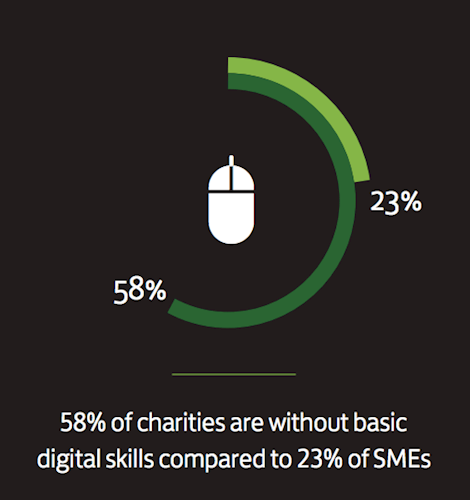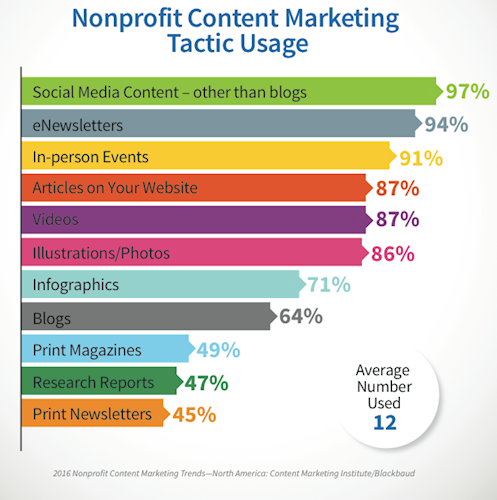The Community and Voluntary Sector – A Digital Skills [Training] Gap

I was prompted to write this short article after being invited to conduct digital marketing training for organisations in the community and voluntary sector in Northern Ireland on behalf of VIEW/digital. My objective was to uncover the differences between digital skills in the private sector and those in the ‘third sector’.
Here goes…
Last summer, a report by NCVO into financial sustainability within the voluntary sector highlighted the paradox of decreased or ‘stagnant’ income against a backdrop of increased demand… the net result of which, of course, is a need to do more with less.
The report concludes by suggesting 10 things voluntary sector organisations can do to begin building financial sustainability. One of these recommendations is ‘map your organisation’s capabilities and capacities’ – evaluating what the organisation can and cannot do, where the gaps are, and what actions can be taken to make the organisation sustainable.
One such gap is highlighted within the report itself when it talks about ‘the potential for technology to help charities generate and use their resources more effectively’… but how many charities fall short when it comes to digital skills. Specifically, the report references the Lloyds Bank UK Business Digital Index 2015, which reveals how 58% of charities are without basic digital skills, compared to 23% of Small to Medium Enterprise (SMEs).
[Update 24th October 2016: the Lloyds Bank UK Business Digital Index 2016 reveals these figures as 49% and 38% respectively.]

In UK regional terms, Northern Ireland indexes at the lower end of the digital maturity scale as defined by four broad skills – the ability to use digital technology to communicate, find things, provide information, and to transact.
While an improving situation, this skills gap is certainly inhibiting the ability of organisations within the community and voluntary here from doing the ‘more’ they need to do with the ‘less’ they have with which to do it.
Not surprisingly, the Lloyds research calls for the need to increase the digital capabilities of charities as one of its three key recommendations.
There is no doubt that social media offers community and voluntary sector organisations an excellent and relatively low-cost means to engage, build and maintain a ‘social community’. And we only need to consider the successes of campaigns like Movember, #NoMakeUpSelfie and #icebucketchallenge to get a sense of the power of social media in raising awareness and galvanising ‘social action’.
Indeed, the use of social media within the third sector is high; however, it may not always be seen as effective by those using it. For example, a report by the Content Marketing Institute shows that while 76% of non-profit organisations [in the US] use content marketing, only 26% consider their efforts effective.
When we consider that the majority (97%) of non-profit organisations use social media for their content marketing, we can deduce that organisations recognise that they could do more to make their social media output work much harder.

Again, as with the Lloyds Bank research, the findings of the Content Marketing Institute correlate effectiveness with digital maturity. And again it highlights a range of differences between non-profit organisations and their private sector counterparts when it comes to their approach to, and use of social media and content marketing.
Having delivered 1000s of hours of marketing, digital marketing and social media marketing advice, mentoring and training to 100s of businesses and organisations across the island of Ireland, I have encountered all levels of digital skills across all sectors – public, private, and community and voluntary alike.
One thing they all have in common is that need to do more with less. Regardless of sector.
Digital marketing training, support and capability building for the private sector is reasonably widely accessible, but (unfortunately) not so prevalent for the third sector.
Perhaps, that gap in digital skills within the community and voluntary organisations is directly proportionate to the gap in digital skills training available to the sector.
Great training goes a long way towards offering more to those organisations that are delivering more to those within our community who appear to need their services more than ever.
Author
